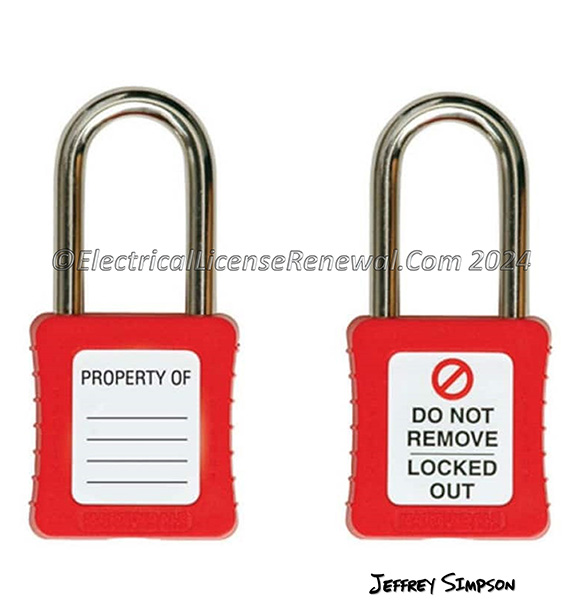NFPA 70E 120.2 Lockout/Tagout Principles.

According to Section 120.2, lockout/tagout principles include several key elements:
- Rules related to employee involvement
- The actual lockout/tagout procedure
- Rules on controlling all sources of electrical energy
- Ensuring that any electrical circuit interlock operation can’t result in reenergizing the circuit being worked on
- Rules to prevent any electrical control devices from being used as a primary isolating device
- Identification of lockout/tagout devices
- Proper coordination between all parties involved with the lockout/tagout procedure
- Forms of hazardous electrical energy control including both the simple lockout/tagout and the complex lockout/tagout procedures
Below is a sample of NFPA 70E. For the complete section, see the actual NFPA 70E text at NFPA.ORG. Once there, click on the free access link to NFPA 70E.
120.2 Lockout/Tagout Principles.
(A) Employee Involvement. Each person who could be exposed directly or indirectly to a source of electrical energy shall be involved in the lockout/tagout procedure.
(E) Control Devices. Locks/tags shall be installed only on circuit disconnecting means. Control devices, such as pushbuttons or selector switches, shall not be used as the primary isolating device.
(F) Identification. The lockout/tagout device shall be unique and readily identifiable as a lockout/tagout device.
(H) Forms of Control of Hazardous Electrical Energy. Two forms of hazardous electrical energy control shall be permitted: simple lockout/tagout and complex lockout/tagout [see 120.4]. For the simple lockout/tagout, the qualified person shall be in charge. For the complex lockout/tagout, the person in charge shall have overall responsibility.